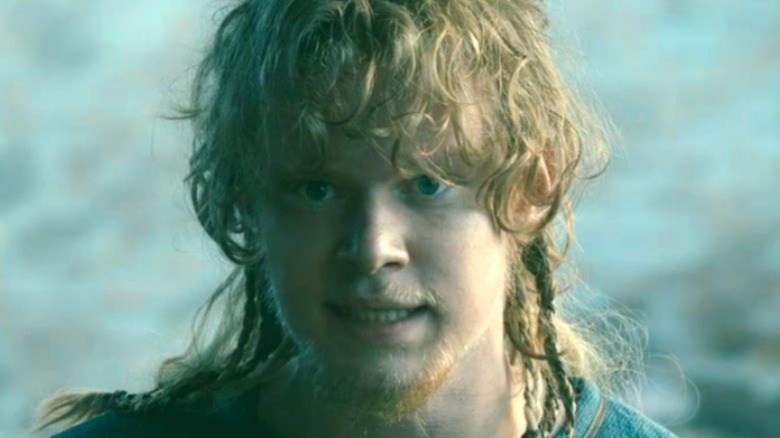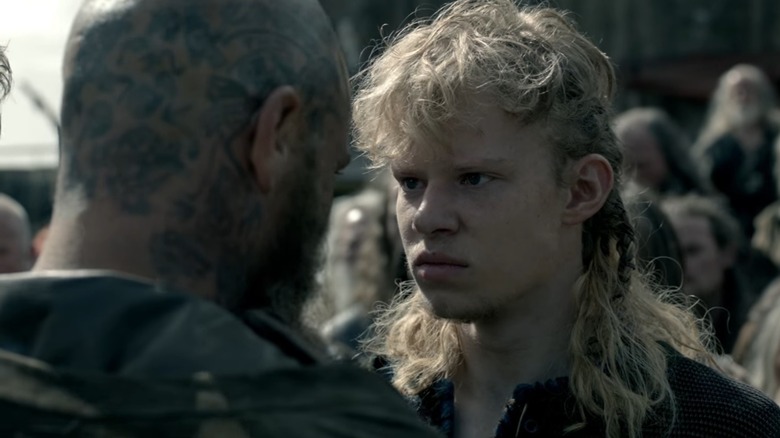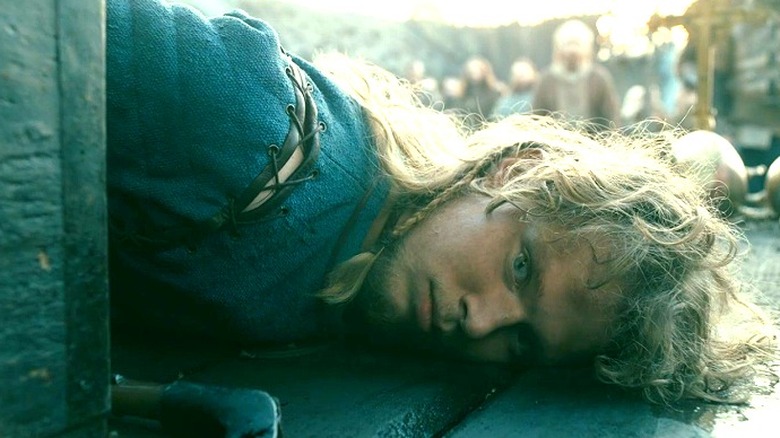The Sigurd Theory That Would Change Everything On Vikings
If HBO's "Game of Thrones" sparked renewed interest in stories inspired by or set in medieval Europe, then Michael Hirst's "Vikings" caused an all-out conflagration, while directing that interest northward. In the years since the series debuted on History in 2013, a litany of similarly-inspired historical tv shows and films (including, most recently, Robert Eggers' "The Northman") have burst onto the scene. While the Scandinavian raiders and explorers and their beliefs have always held a certain degree of fascination, Hirst's revival of the saga — and of its ability to blend intimate, familial storytelling with history, mythology, and epic, action-packed battles — kicked off what can only be described as a Viking and Norse mythology pop-culture renaissance.
At least part of the appeal of "Vikings" rests in its focus on the complex family dynamics behind the sagas' legends and lineages, including the volatile sibling rivalry between Alex Høgh Andersen's Ivar the Boneless and David Lindström's Sigurd Snake-in-the-Eye. As viewers will recall, in the Season 4 finale of "Vikings," Ivar throws an axe into his brother's chest, after being provoked one too many times. A stunned Sigurd rips the axe out and attempts to retaliate, but falls to the ground and dies in relatively short over. Nevertheless, for a few fans of the series, Sigurd's seeming on-screen death might not have been what it appeared.
Some fans thought Sigurd might still be alive
On their YouTube channel, host and "Vikings" enthusiast Vikinger addressed the fan theory that Sigurd survived his brush with death, and went on to marry a Northumbrian princess, as he does in the 13th century Icelandic Sagas, "The Saga of Ragnar Loðbrók & the Saga of Ragnar's Sons" (via Aldsidu). As fan Hernan Reyes commented on the video prior to Season 5, "The axe blow could well have knocked Sigurd out; he may have bled internally ... but a small axe thrown from across that long table would not necessarily hit the heart, and ... Sigurd may well have survived."
While some fans based their desire to see Sigurd live (even if it happened off-screen) on Hirst's source material, others simply felt betrayed by his abrupt death. "Stupid how they built up baby Sigurd so much," wrote Reddit user Sherman_Gepard, adding, "[they] loved showing him and that eye. Then just killed him off before [he did] even one significant thing."
Though the episodes following Sigurd's run-in with Ivar do little to imply he survived his wound, a cursory glance at the Icelandic Sagas suggests fans had good reason to believe he did. The problem, of course, is that Hirst very intentionally deviated from known history and timelines and Scandinavian literary tradition in constructing his series. As with any epic television adaptation, certain narrative branches and subplots had to be cut in order to ensure the "Vikings" timeline" didn't get bogged down.
How viable is the Sigurd Lives theory?
Sigurd Snake-in-The-Eye/Sigurd Áslaugsson features prominently in the Sagas long after Ragnar's death, becoming the grandfather of real-life 10th Century King Harald Fairhair. In "The Saga of the Volsungs: With the Saga of Ragnar Lothbrok," Jackson Crawford explains that, "By connecting the Norwegian royal family with this preeminent family of Norse heroes, the Saga of Ragnar Lođbrók was part of a tradition that glorified living rulers and helped justify their claims to power ..." (Crawford, page XIX).
This contradicts Hirst's depiction of Harald (Peter Franzén's Harald Hálfdansson Fine Hair), since he's at least a dozen or so years older than Sigurd in the series. In order to create a more dynamic story, Hirst moved actual historical figures like Harald I and Rollo of Normandy (Clive Standen) into the same timeline as Ragnar (Travis Fimmel), despite the fact that their heydays don't exactly line up.
This may be why he chose to cut Sigurd from a story in which, traditionally, he plays a key role. Since Hirst depicted Harald I as Ragnar's contemporary, he didn't need Sigurd to act as a bridge between legend and later reality. By killing him off, Hirst avoided having to juggle yet another son's story in an already crowded and soon-to-conclude series. While that may put the kibosh on the Sigurd Lives fan theory, it at least explains why one of Ragnar's most famous sons (are there any other kind?) exited the epic far earlier than expected.


